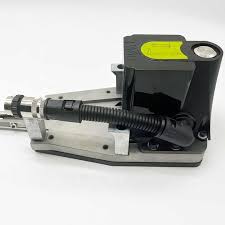
These tension devices typically consist of spring-loaded rollers, brake systems, or friction-based mechanisms that regulate the yarn tension as it passes through the Leno mechanism. The devices can be adjusted depending on the yarn type, tension requirements, and machine speed, ensuring smooth and continuous operation. The tension needs to be uniform across all warp threads, and even slight variations can lead to uneven weaving or fabric defects, making tension control a critical aspect of the process.
The role of the Leno tension devices is particularly important due to the high-speed operations involved in modern weaving. They are designed to handle varying yarn properties such as thickness, elasticity, and strength, which all influence how the yarns behave under tension. By maintaining consistent tension, these devices prevent warp breakage and ensure that the twist applied to the yarns during the Leno weaving process is uniform and secure, which is essential for producing high-quality mesh fabrics.
In addition to preventing breakage and fabric inconsistencies, proper tension control also contributes to the efficiency of the weaving process. Well-calibrated tension devices reduce downtime caused by warp yarn issues, enhance production speed, and minimize maintenance requirements. By ensuring the yarns remain in optimal condition throughout the weaving process, Leno tension devices play a vital role in ensuring the quality and durability of the finished fabric.
We Hope You Find What You are Looking for
Leno tension devices are crucial components in Leno weaving machines, designed to maintain the correct tension of the warp yarns during the weaving process. These devices ensure that the yarns do not become too tight or too loose, which could lead to fabric defects such as thread breakage, uneven tension, or inconsistent weaving. In Leno weaving, the warp yarns are twisted before being woven with the weft, and maintaining the right tension is essential to preserve the integrity of the Leno weave pattern.
Frequently Asked Questions






